We begin Friday, our last full day here, on a bus filled with SPM/SFB twinning members, moving slowly through the snarled morning traffic. There are no stoplights, no stop signs to guide our forward progress over long, congested distances.
Instead, we “barter” with other vehicles for road position, our driver silently negotiating with a blend of skill and assertiveness to our best advantage. Everywhere the boda-bodas weave, sprint, squeeze their way ahead between the trucks and busses all around them, like water finding its own level. We observe no words or gestures of anger or aggression among the drivers, just a shared determination to reach their destination as quickly and efficiency as they can. It’s amazing that it happens, all things considered, in such an orderly manner.
Someday, it is possible this situation will vastly improve. Uganda is changing. Uganda is growing. Many, many decisions yet to be made along the way will help shape the direction this fascinating country will take. For now, we spectators from Cedarburg look on and wonder how our tiny part in this transformation will play out over the years to come.
Our first stop is an open market right along the side of the road, behind a wall. A few dozen vendors have set up shop there, arranging their wares on the ground under canopies that shade us from the sun. It’s a good place to keep a promise to a child, grandchild, or some other family member to bring home a souvenir. Looking for a traditional dress or colorful shirt? You’ve come to the right place. Baskets, purses, hats, scarves, T-shirts, crafts, keychains, carved masks, more? All here.
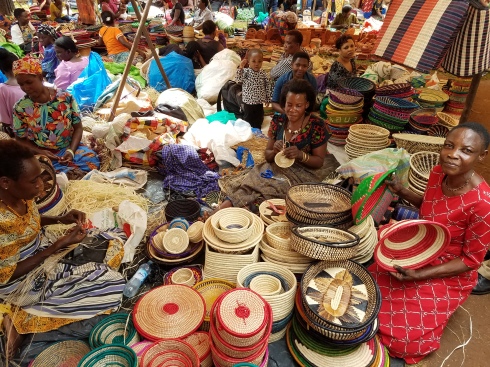
Our hosts guide us and offer bargaining tips. Again, an orderly, dignified process, finding the right balance point between an eager buyer and willing seller. We return to the bus with our stuff and head to Namugongo.
Namugongo is really the focal point of the day, and in some respects of our entire trip. Just as the Declaration of Independence holds a special place in our hearts and our annual celebrations, Namugongo represents, for Ugandans specifically and many Africans in general, a pivotal and cherished period in its history. In 1885, the local king Mwanga had grown fearful or resentful of the young newly baptized Christians in his midst, who proclaimed that a new Kingdom of Heaven would survive his earthly reign and who had called for moral reforms. Mwanga went on a murderous rampage.
The term “Namugongo,” in the local language, refers to the human back. Prisoners were literally bound and dragged there on their backs to be tortured further and ultimately martyred. The forms of death were cruel, and the details aren’t spared in the descriptions we find on the commemorative sites.
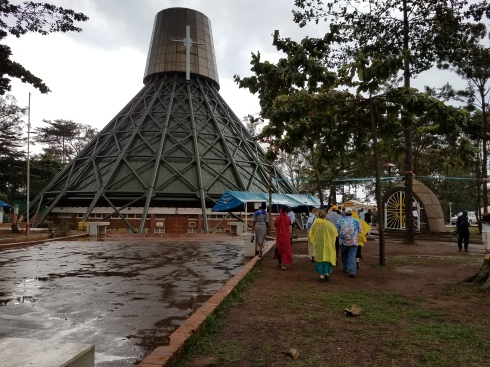
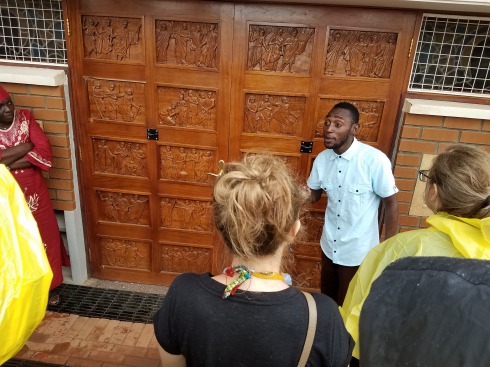
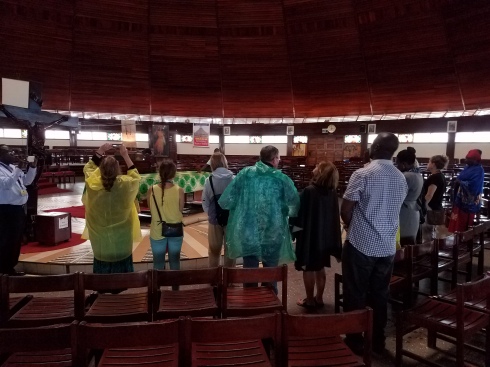
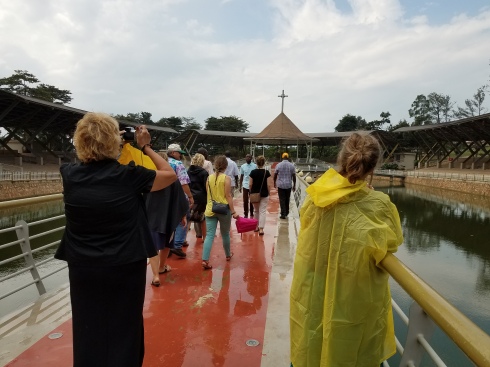
Although June 3 is the official date on which Ugandan Martyrs Day is celebrated (and a large number were actually killed on that day), the executions took place over a period of a few years. The commemoration is ecumenical: 22 Catholics and 23 Anglicans were identified as having been killed, and more deaths are thought to have gone unrecorded.
Martyrs Day symbolizes Africa’s embrace of Christianity as its own, and its willingness to make the ultimate sacrifice for this new faith. Three popes have visited the huge Martyrs shrine at Namugongo, and the Catholic martyrs were canonized within the last few years.
This year, according to news reports, 3 million pilgrims traveled — almost all of them on foot, and many of them from other countries — to attend the solemn event. That astonishing number is not at all out of line with attendance estimates from previous years.
It’s also a testimony to the deeply held faith of our twins and their fellow citizens. The sacrifice of the martyrs has influenced Uganda’s religious fervor and outlook more than we might imagine. In a way, it’s the birthplace for our reason to be here this week, visiting schools and churches, and for hoping and wondering how far this holy, blessed relationship may carry us all into the future.
These posts should be in the bulletins (one each week). So well written and paint an accurate and vivid picture of SPM and its projects, groups…etc. So enjoyed reading and made me wish all the more that I had been with you. Thank you for representing SFB and the SFB twinning committee. Can’t wait to hear more stories and see all the pictures!
LikeLike